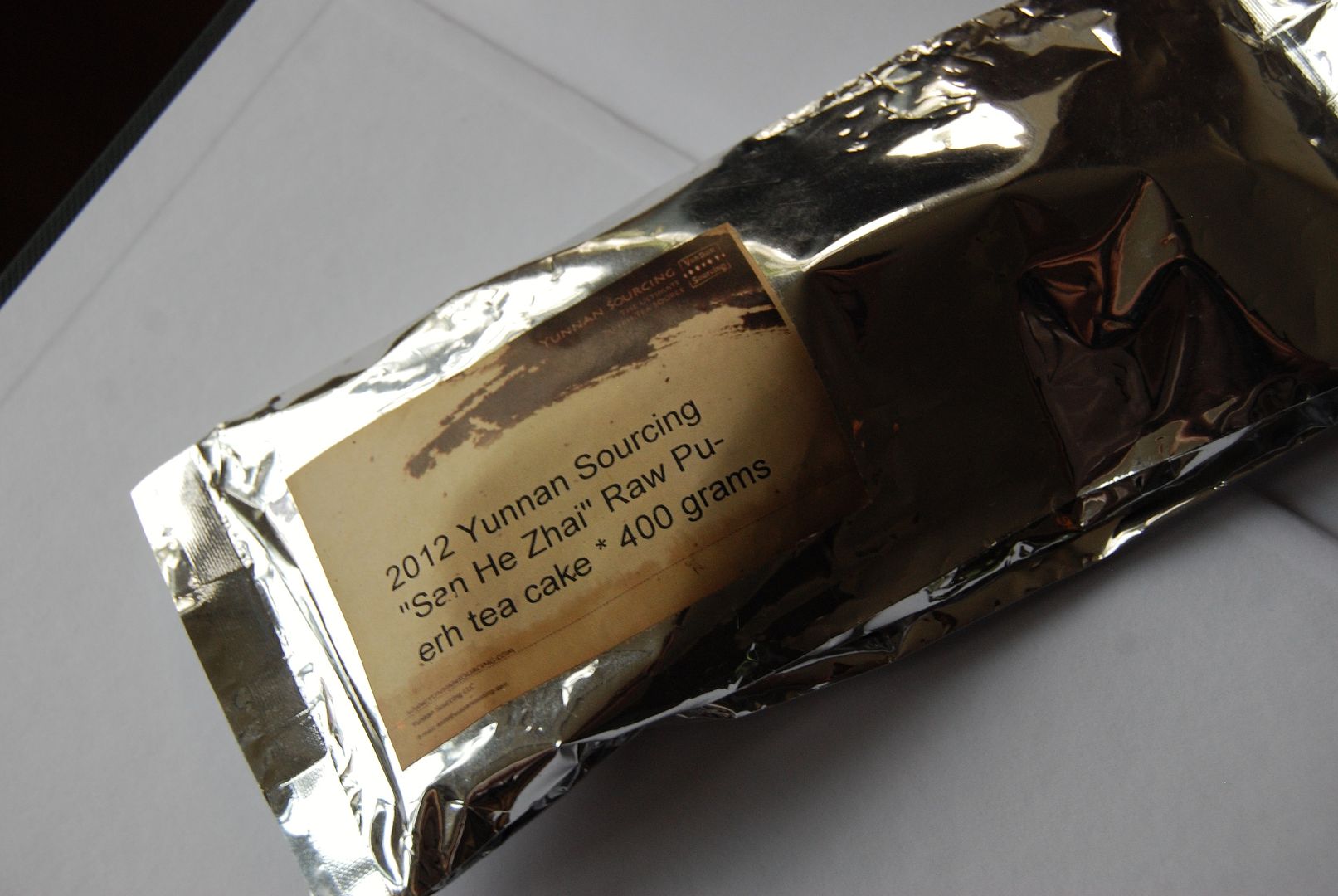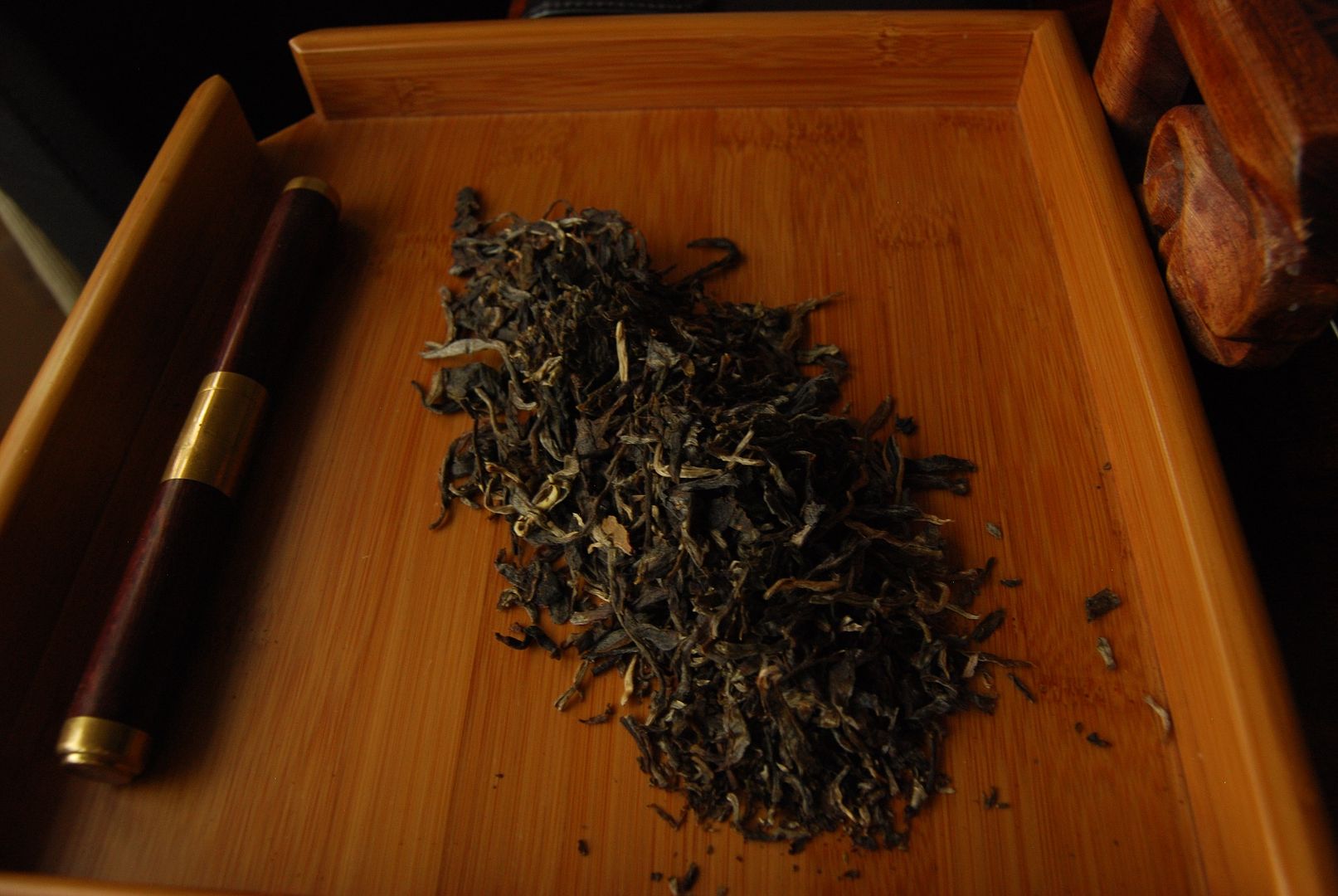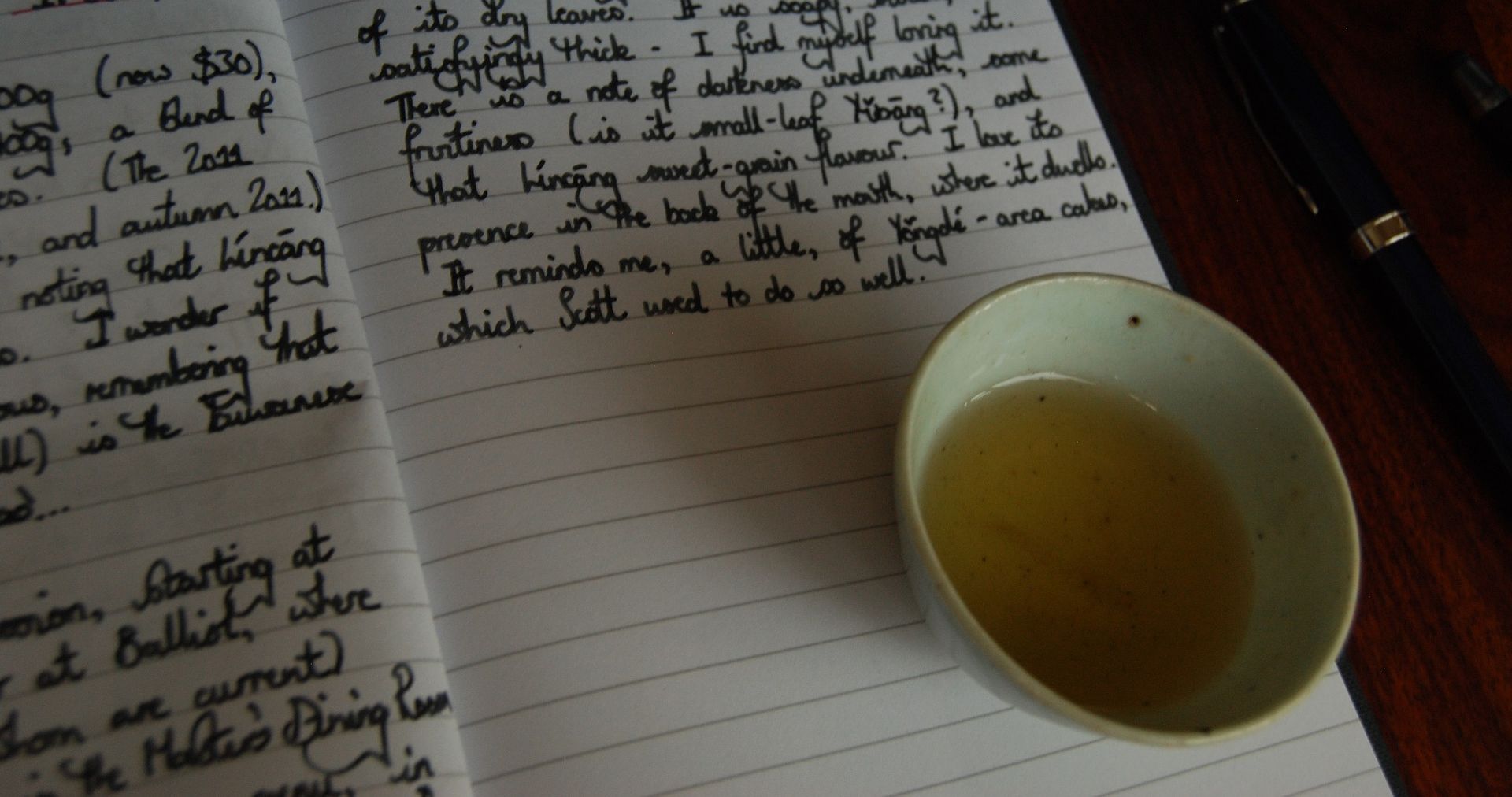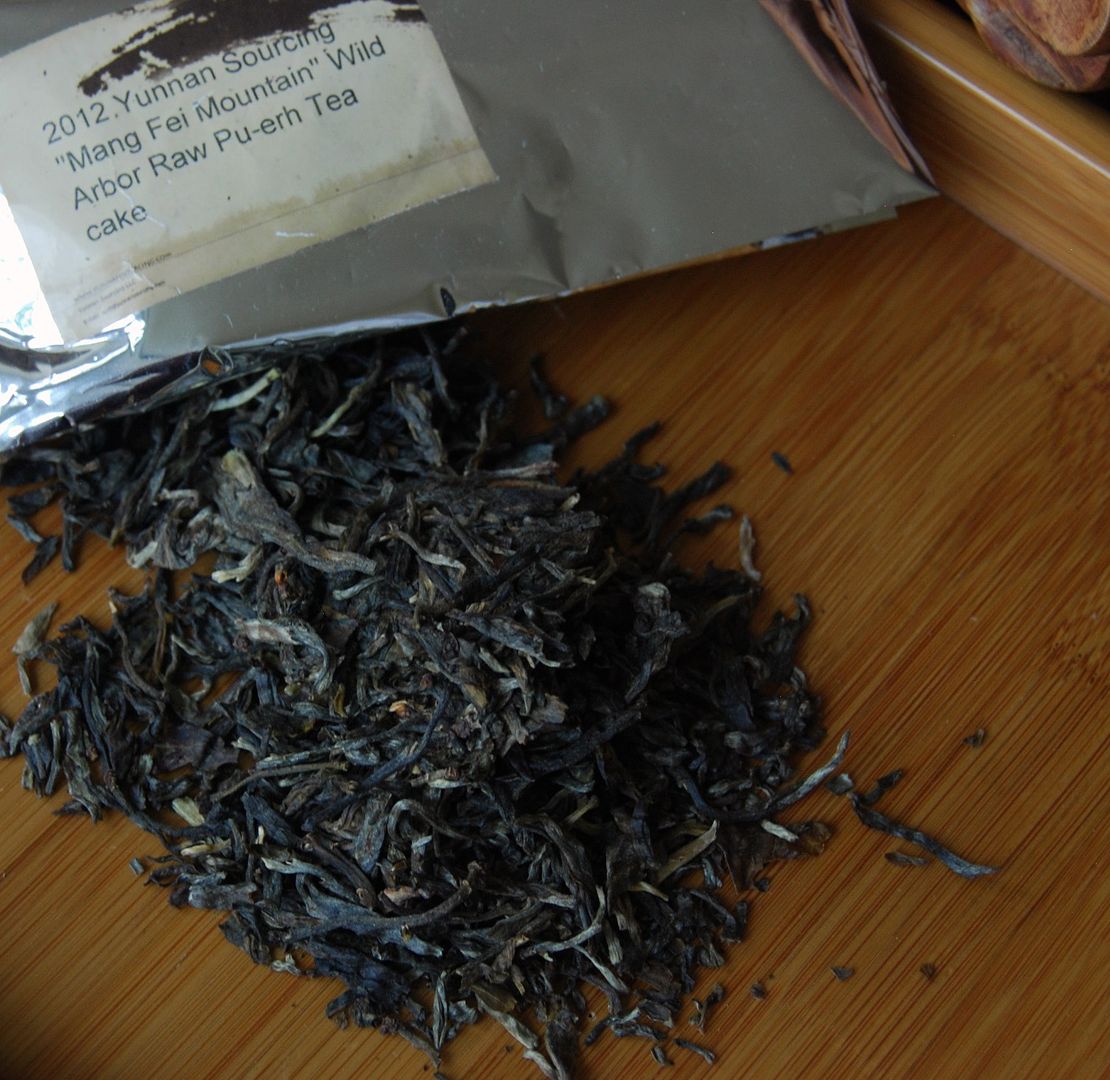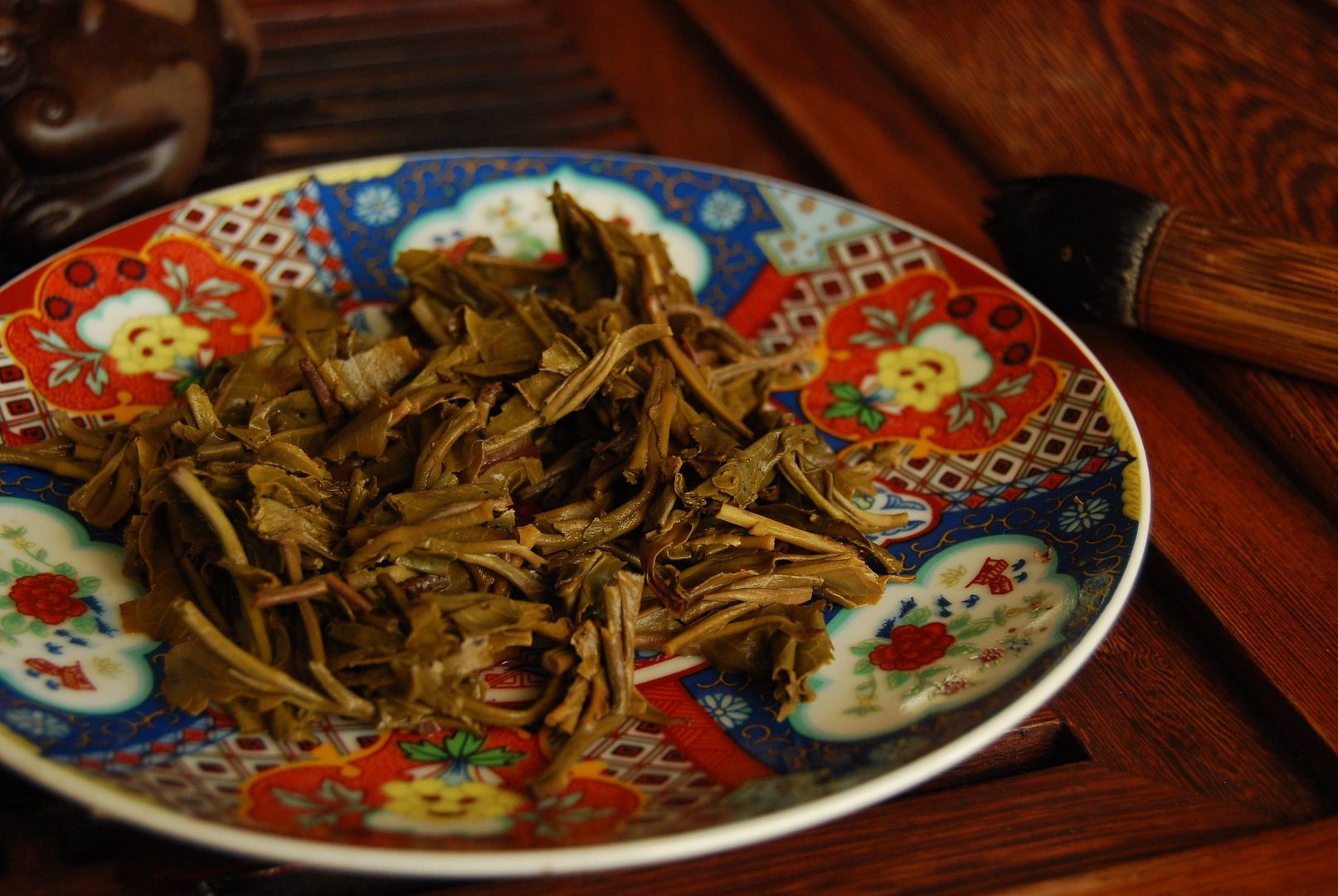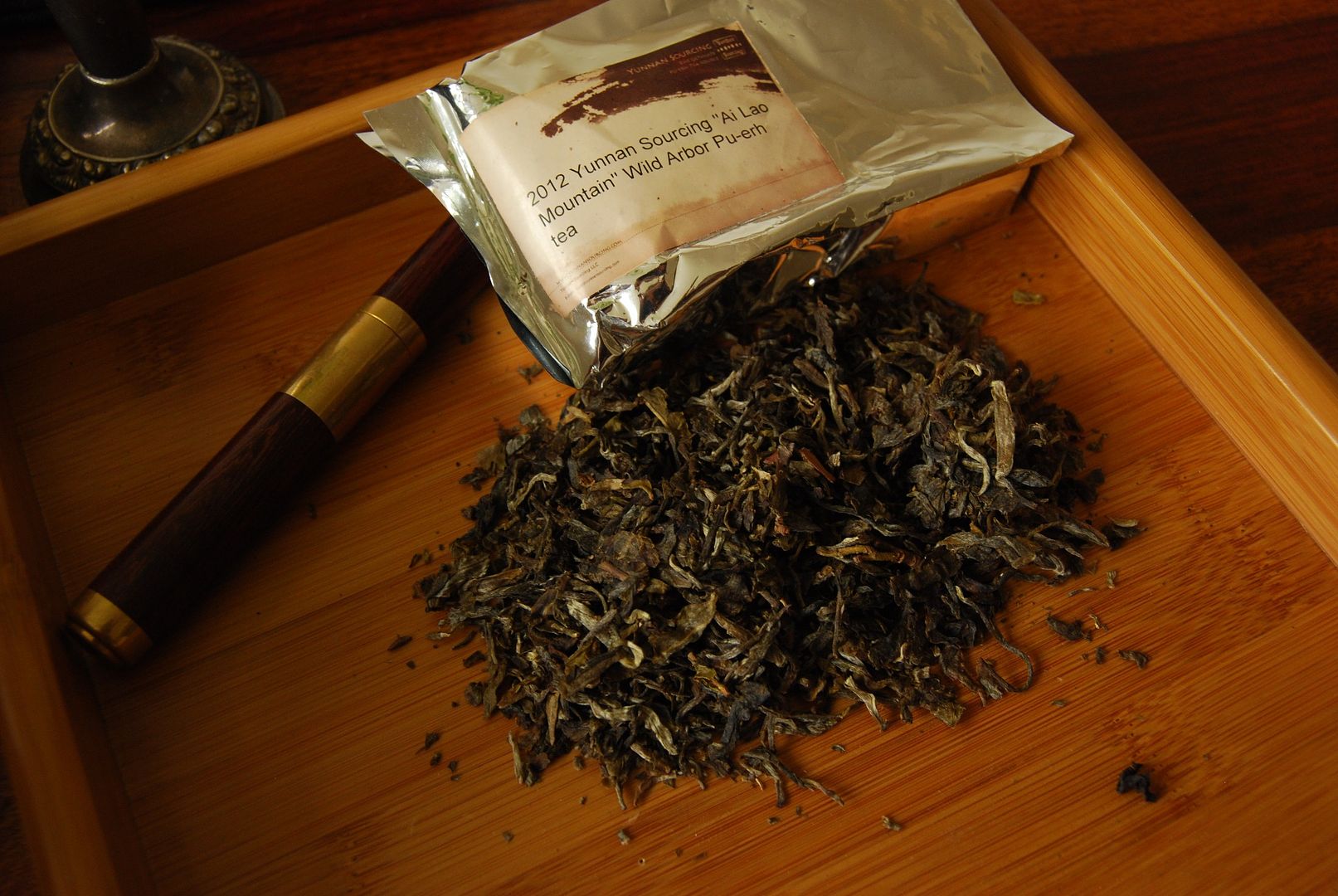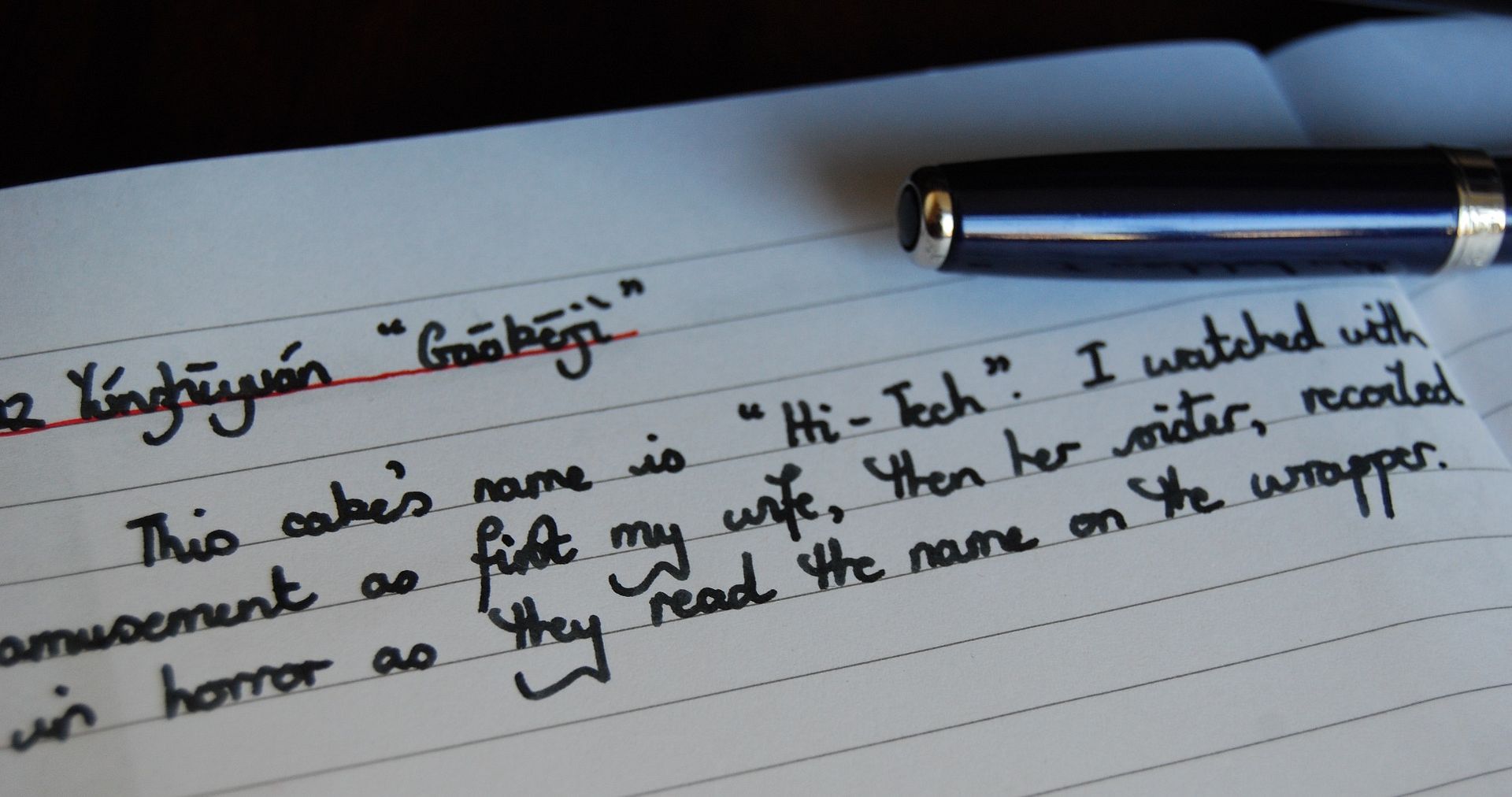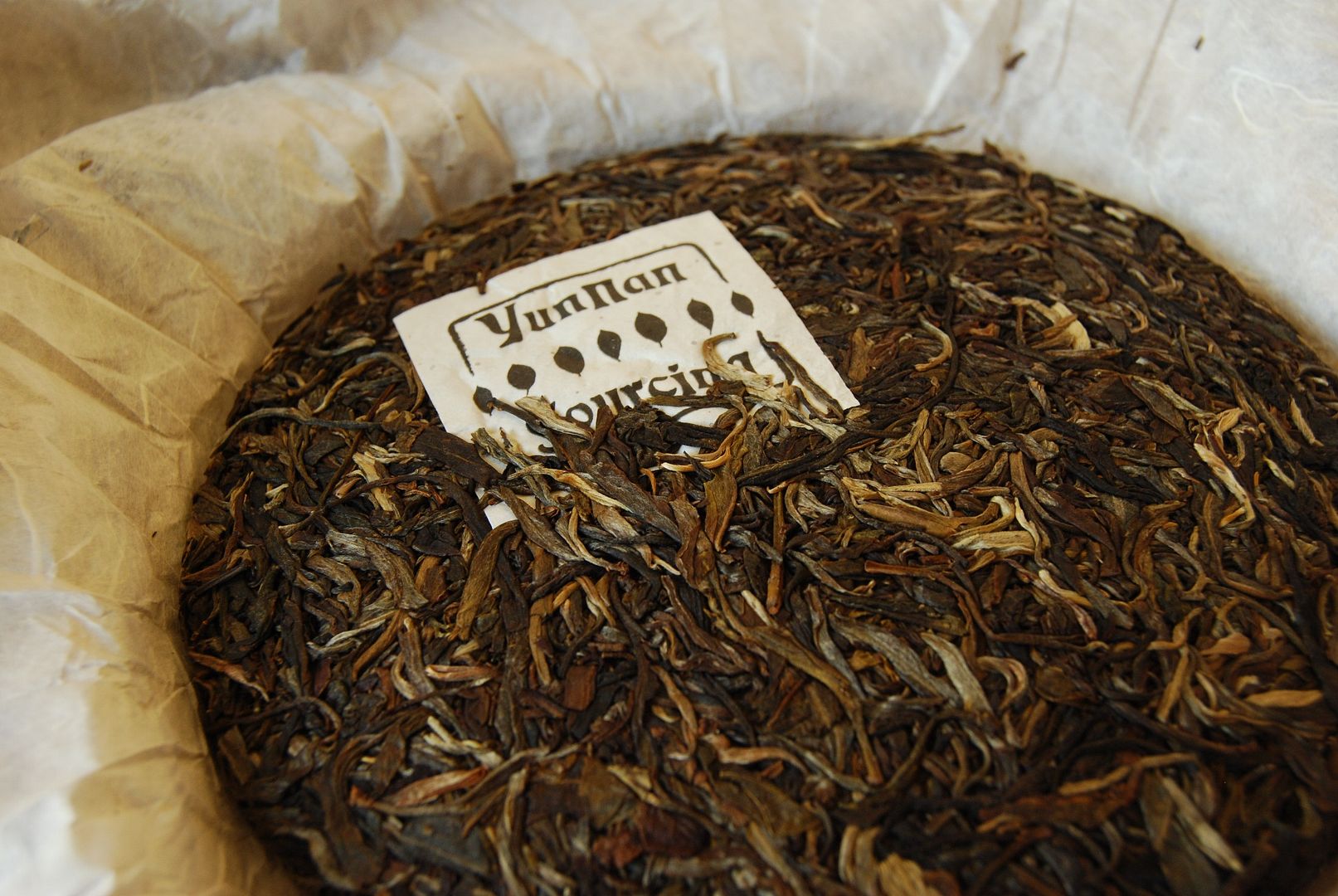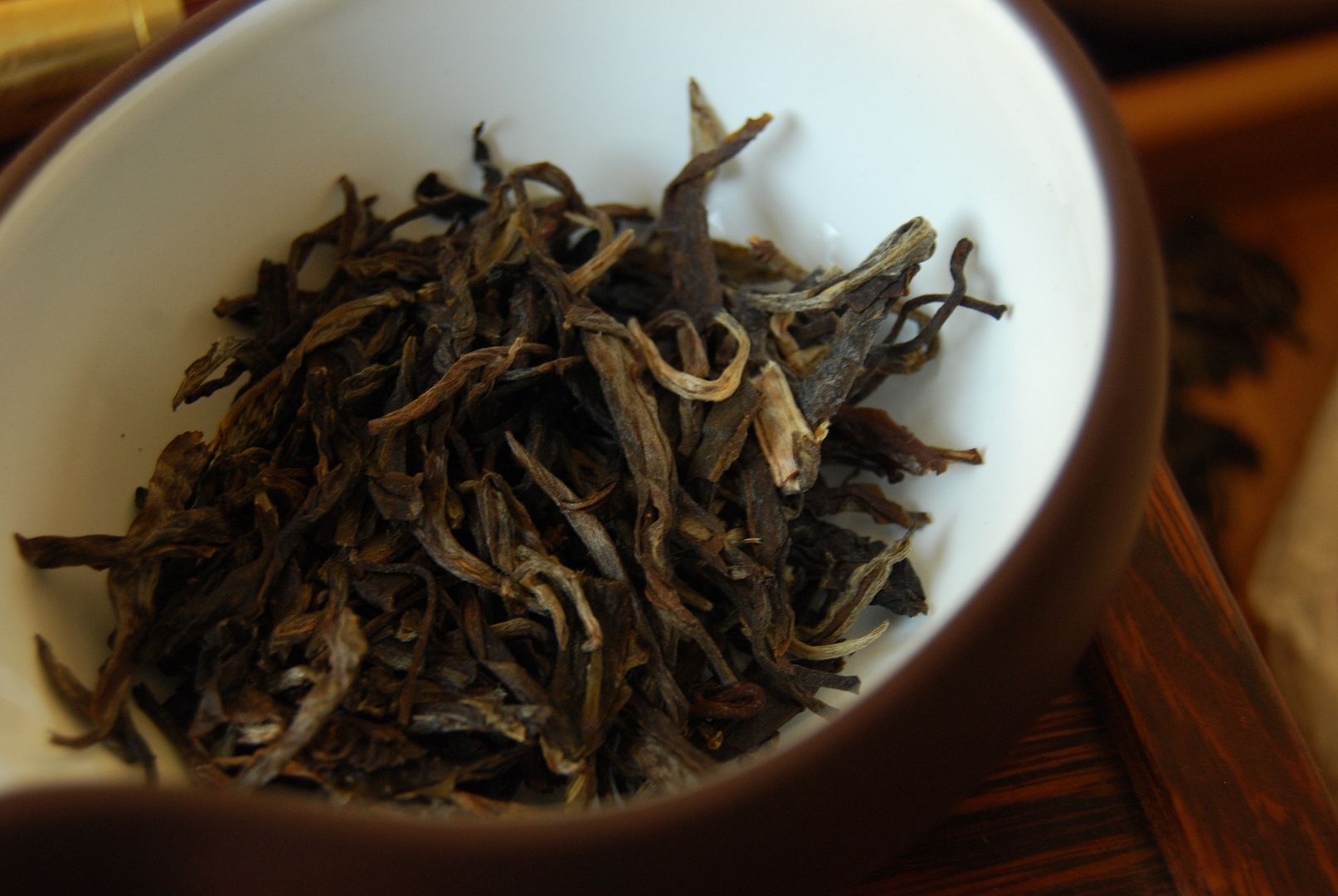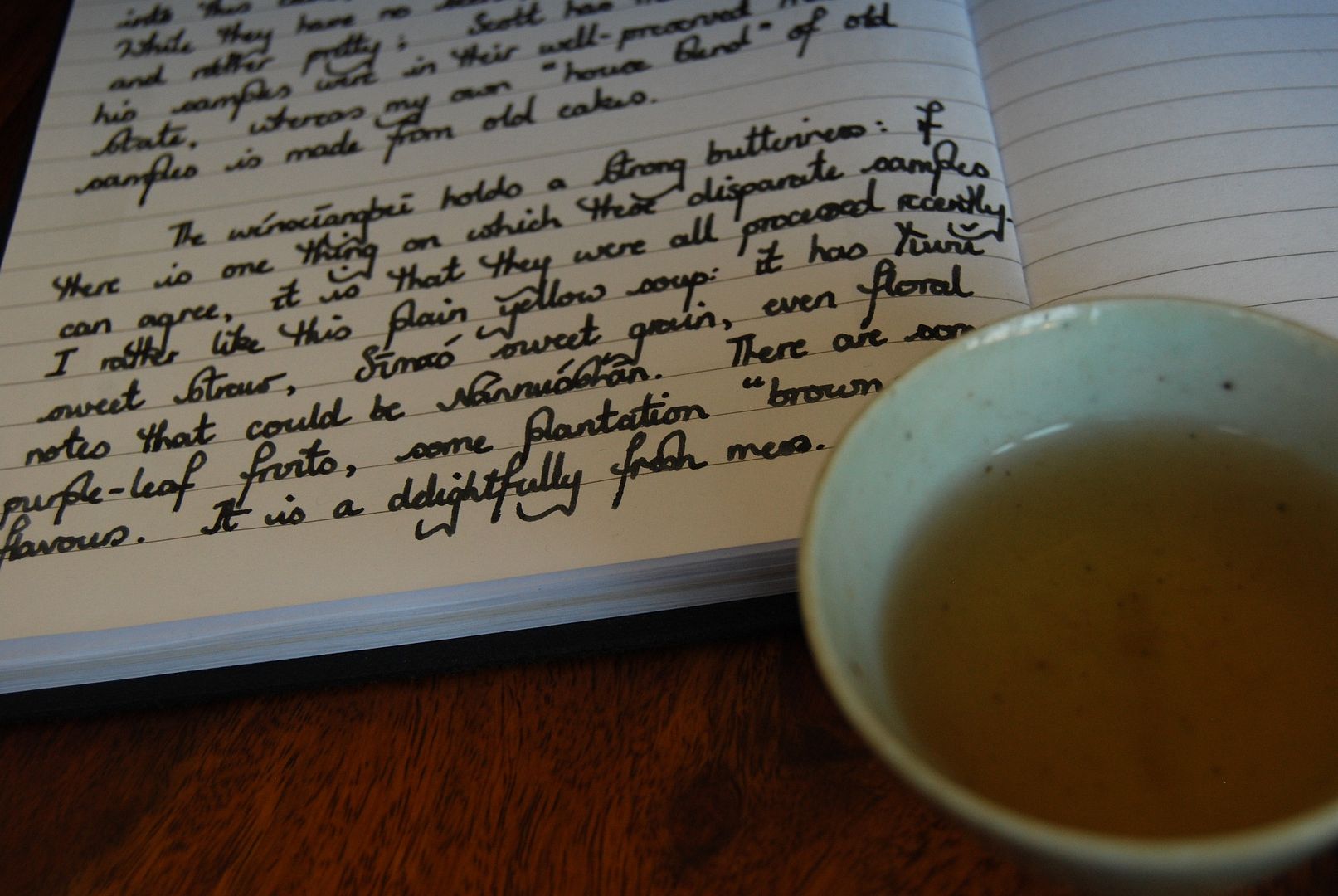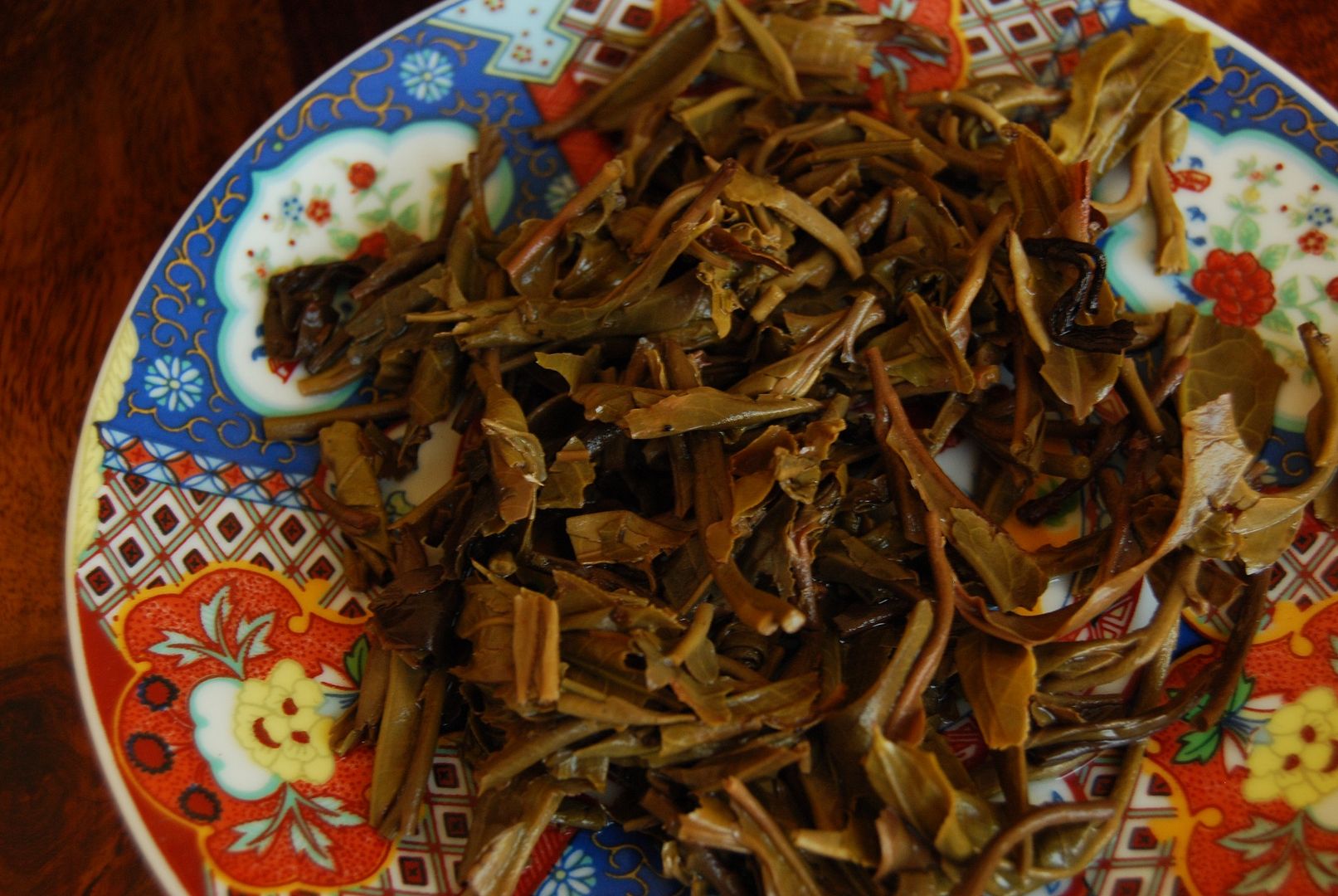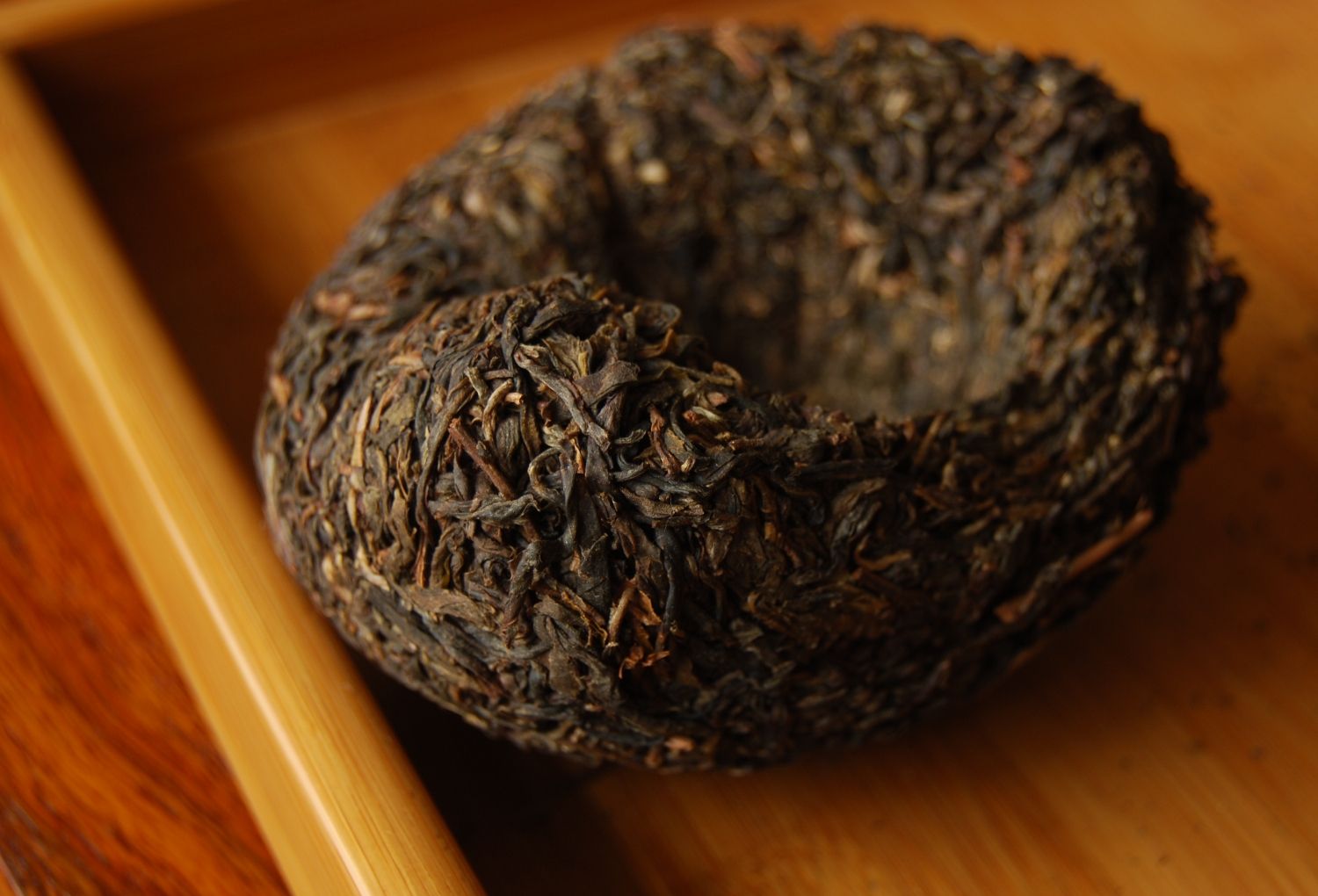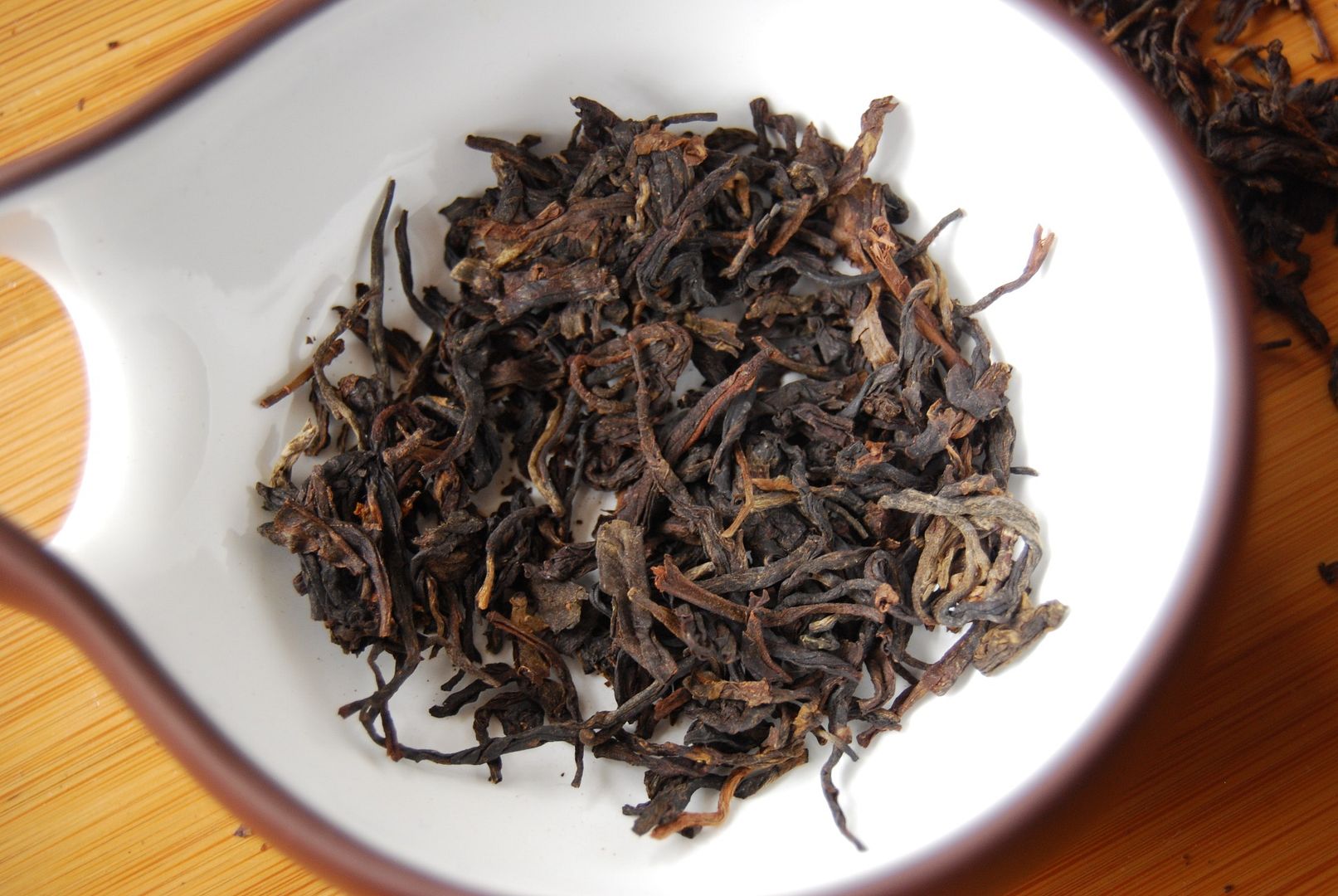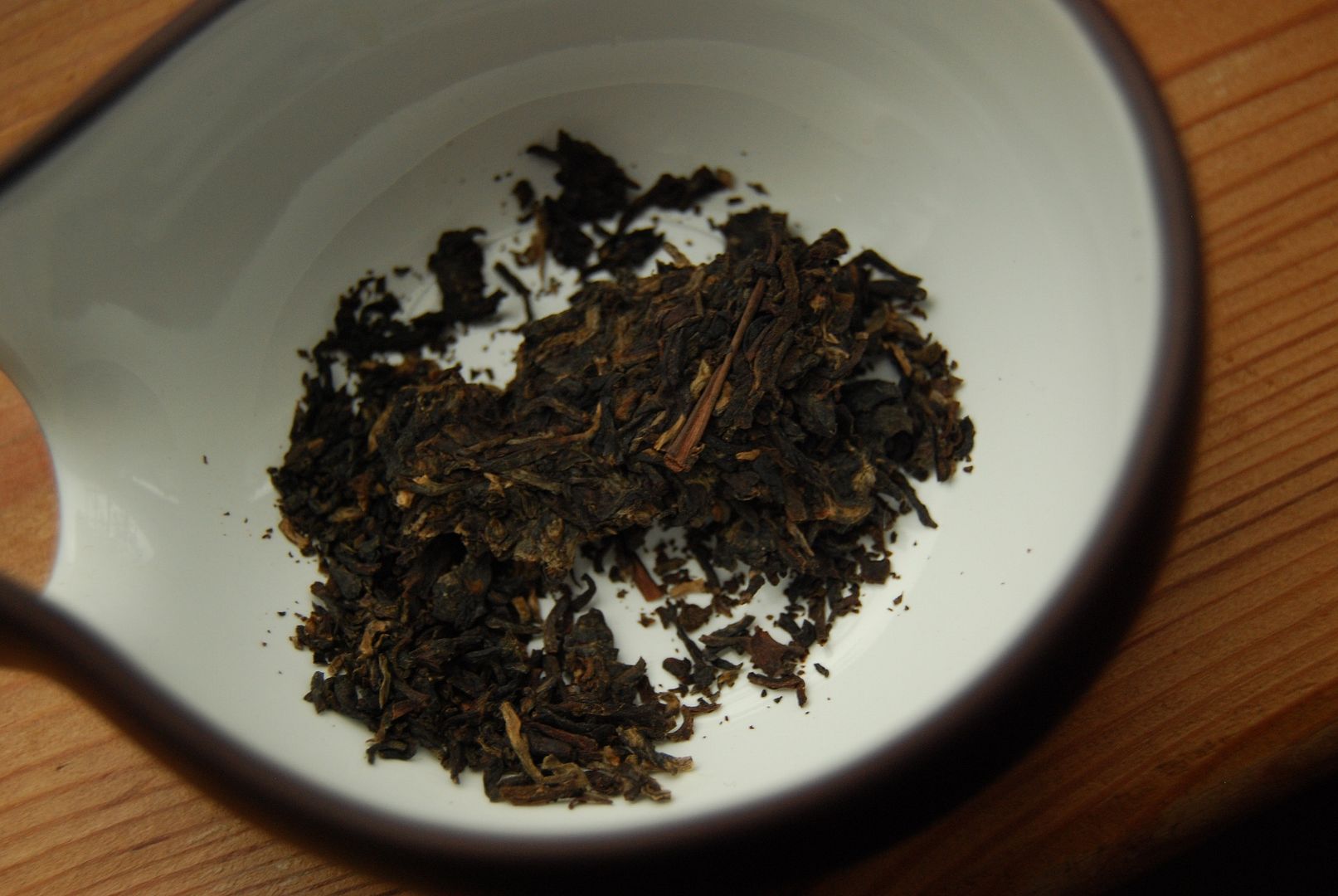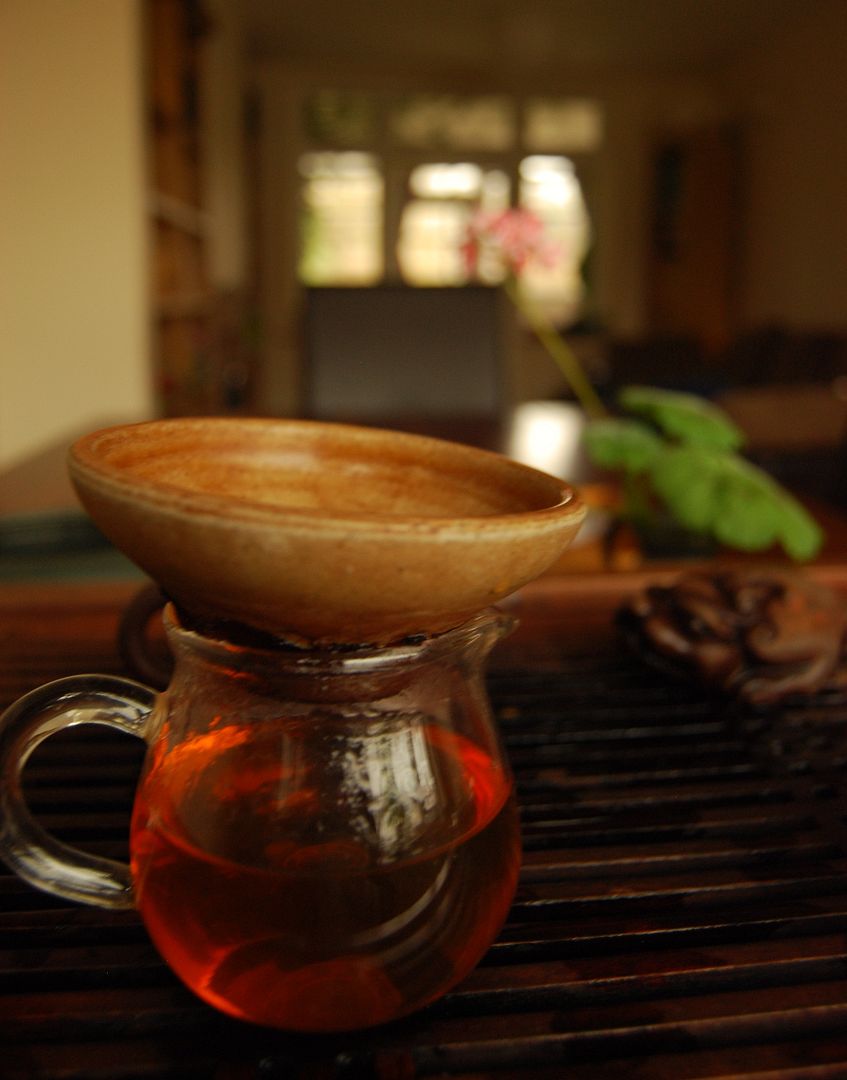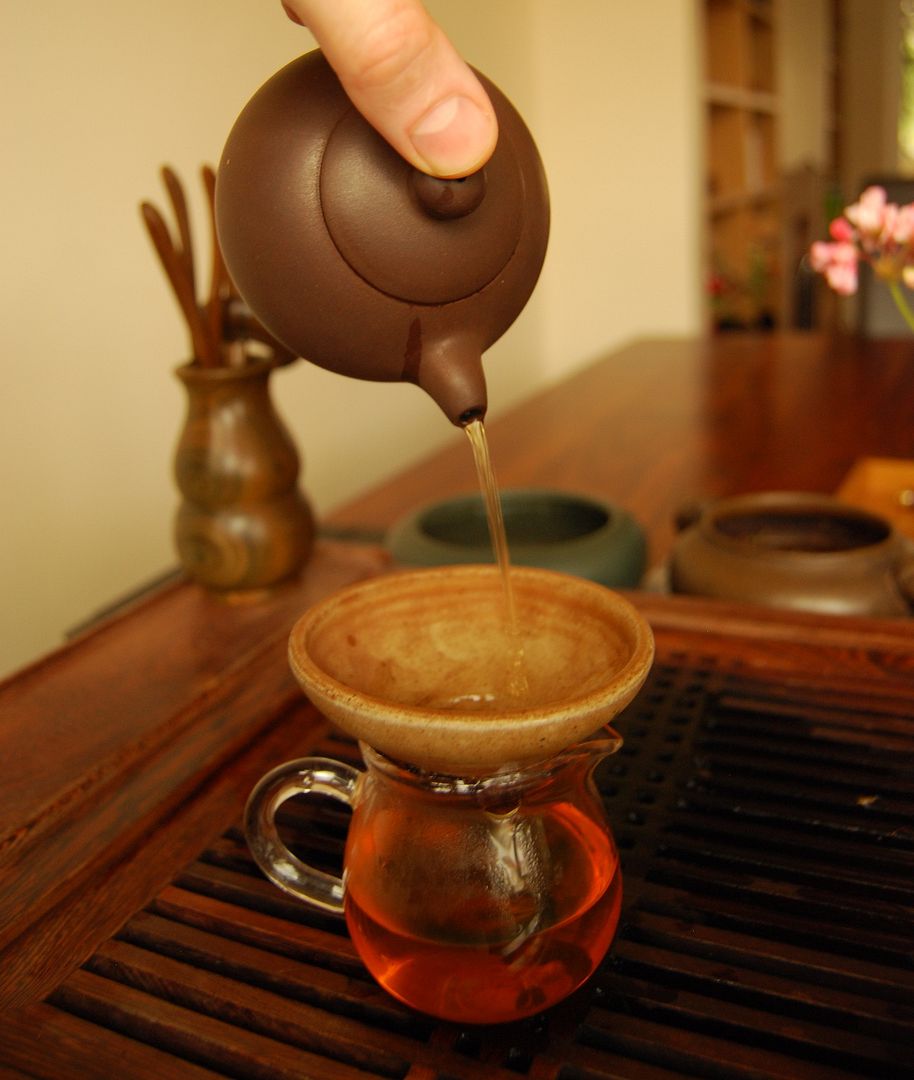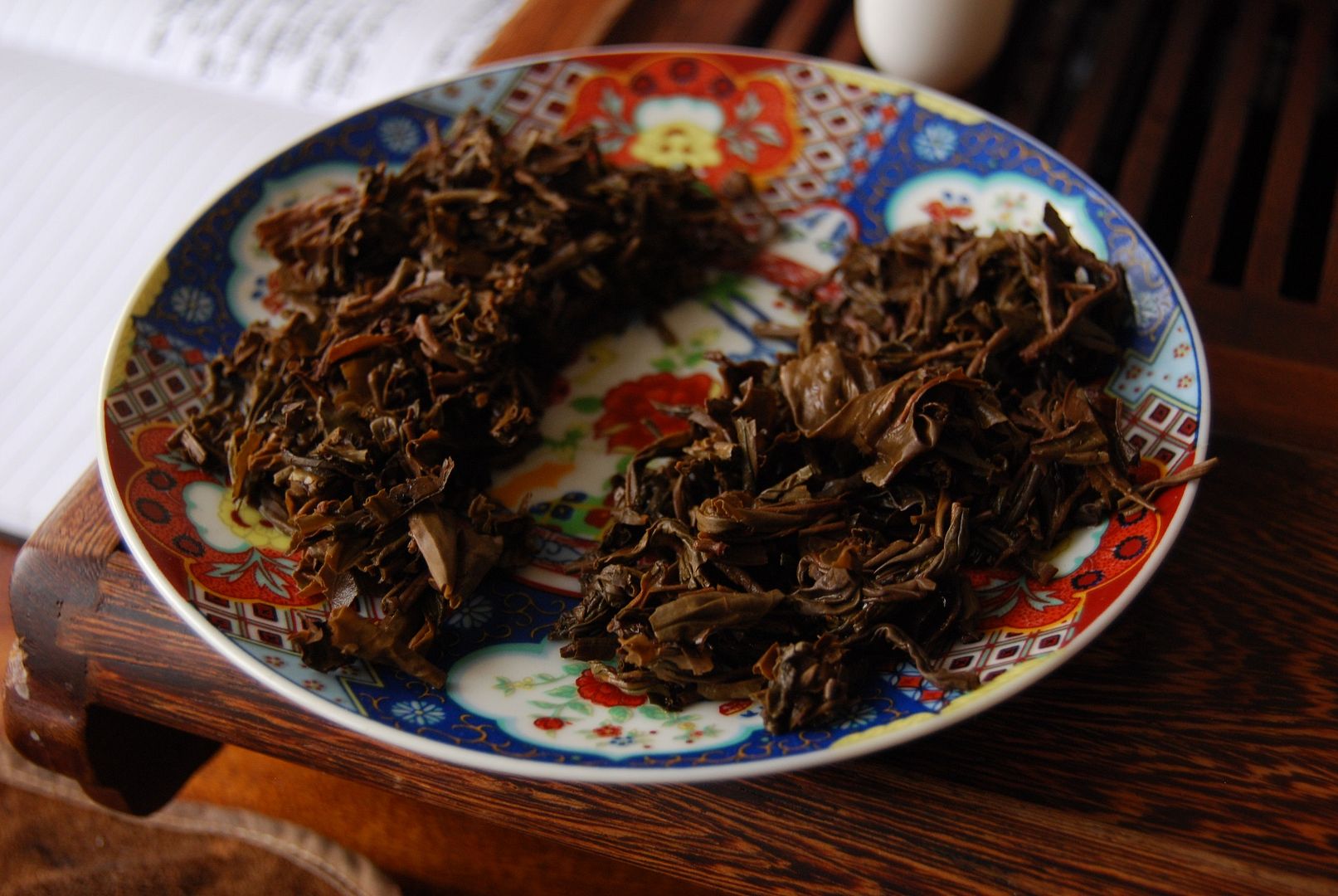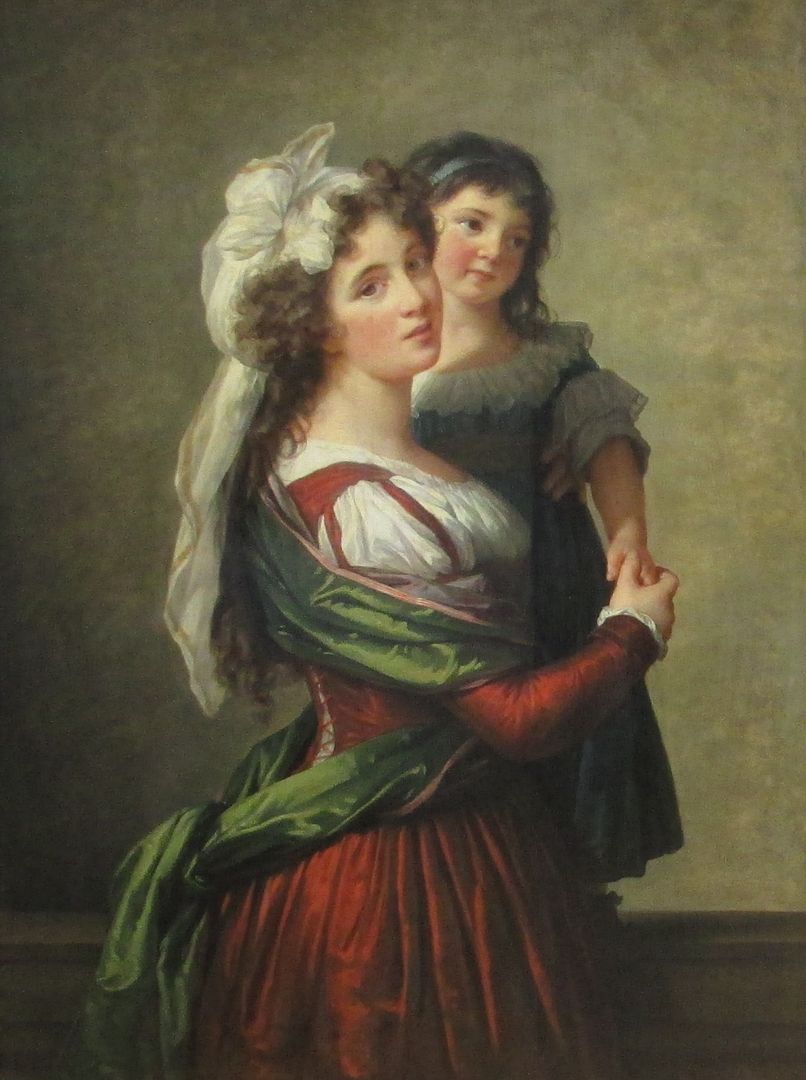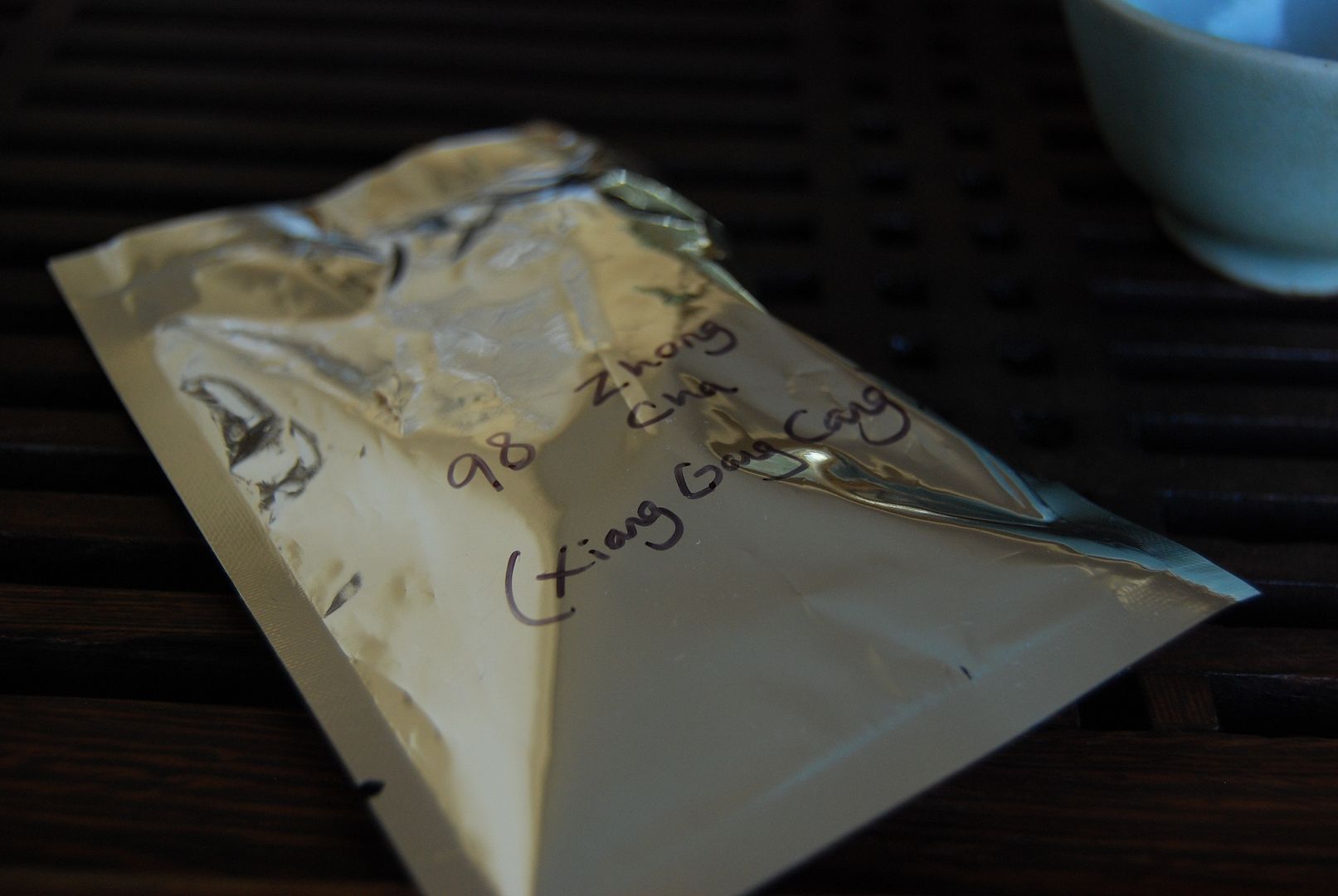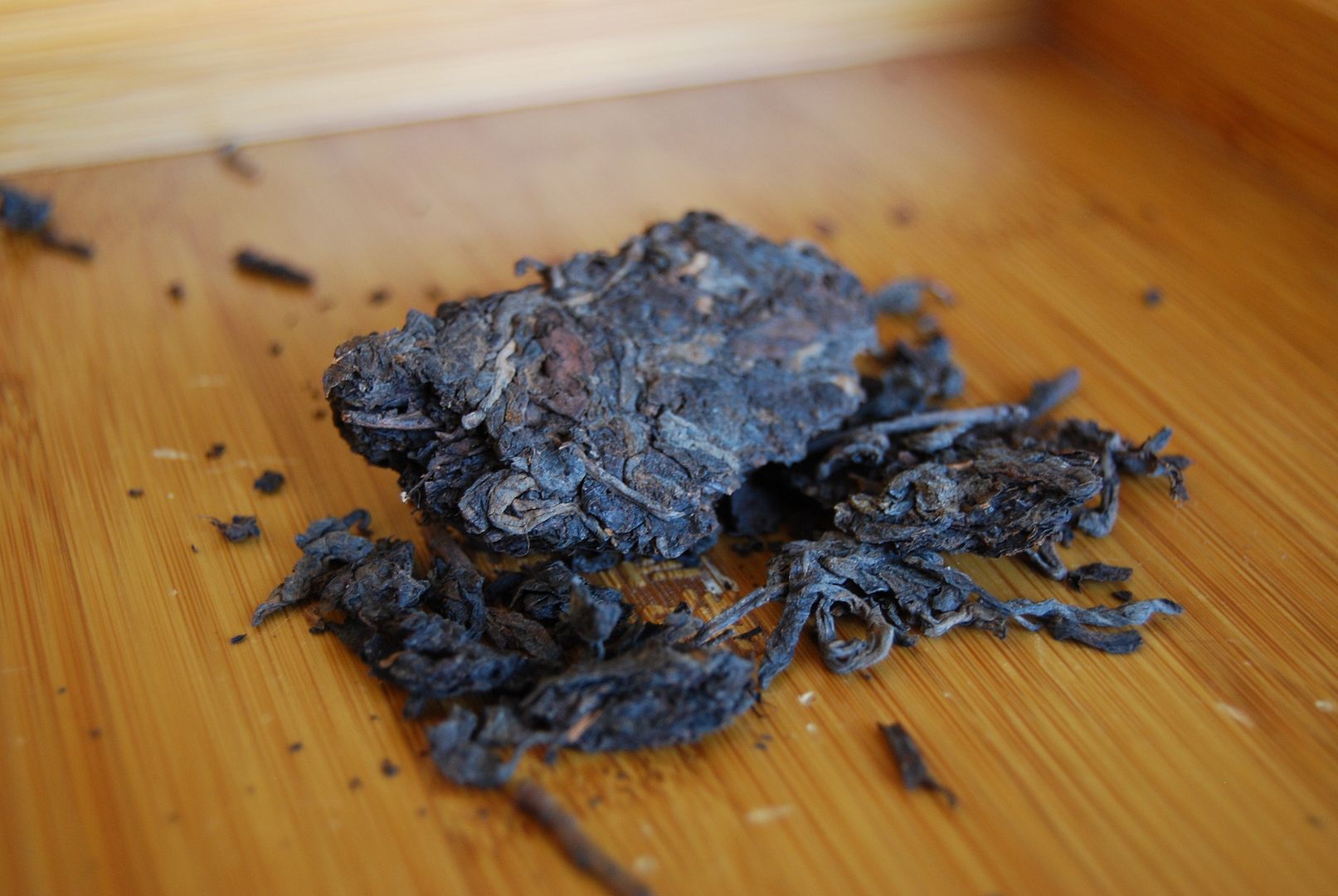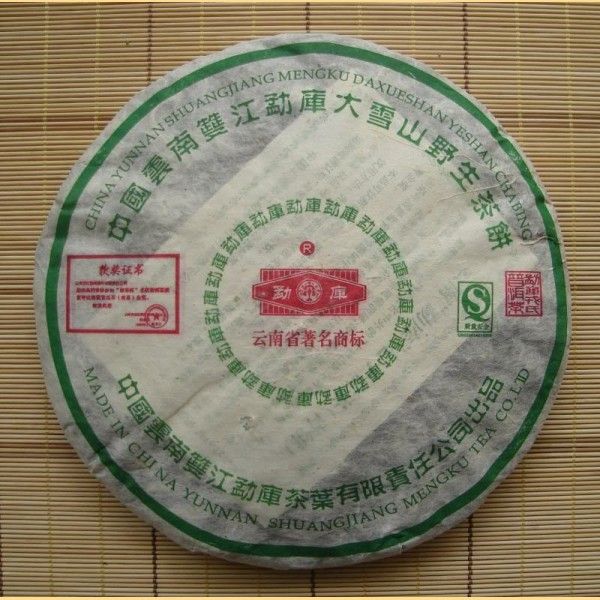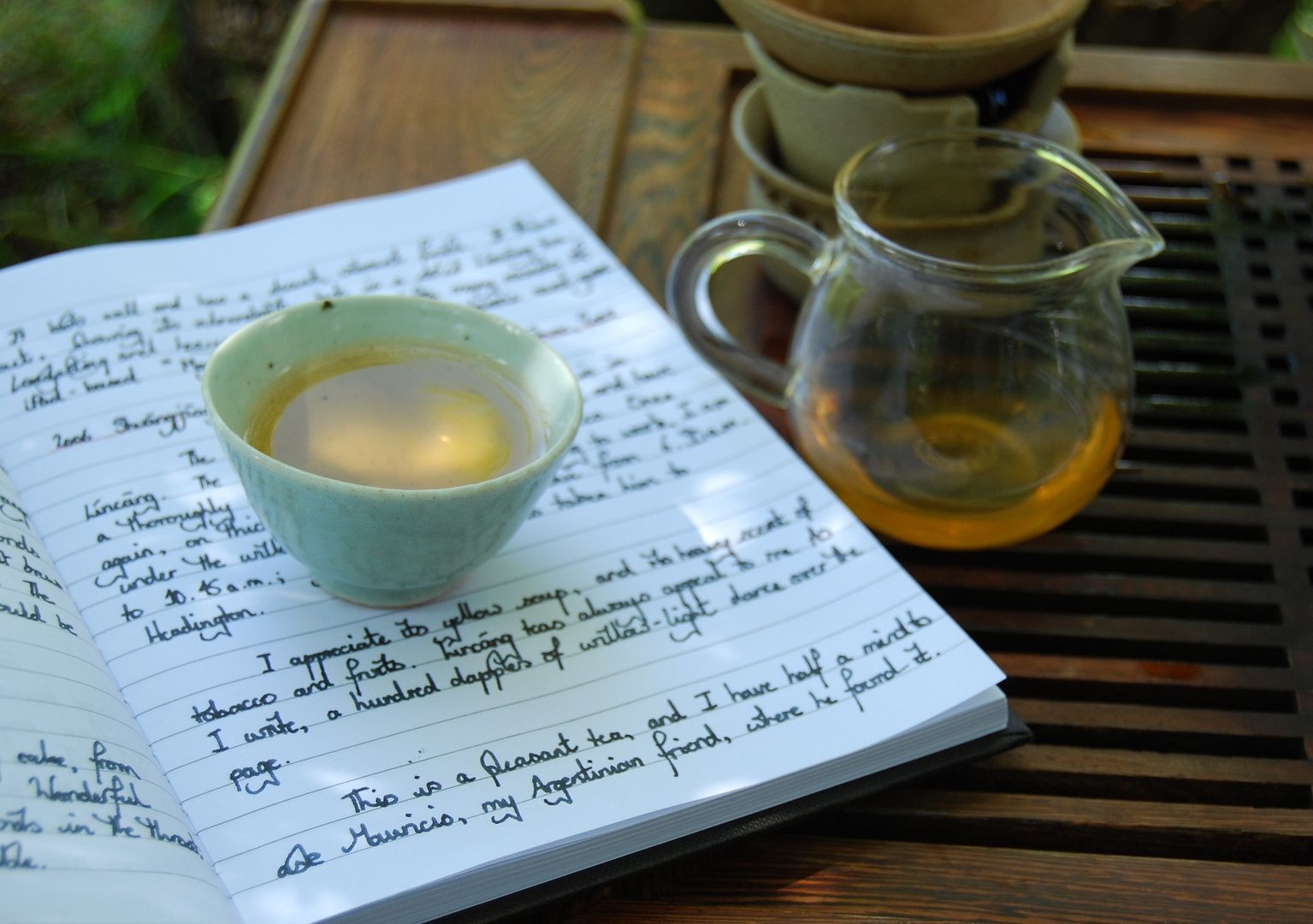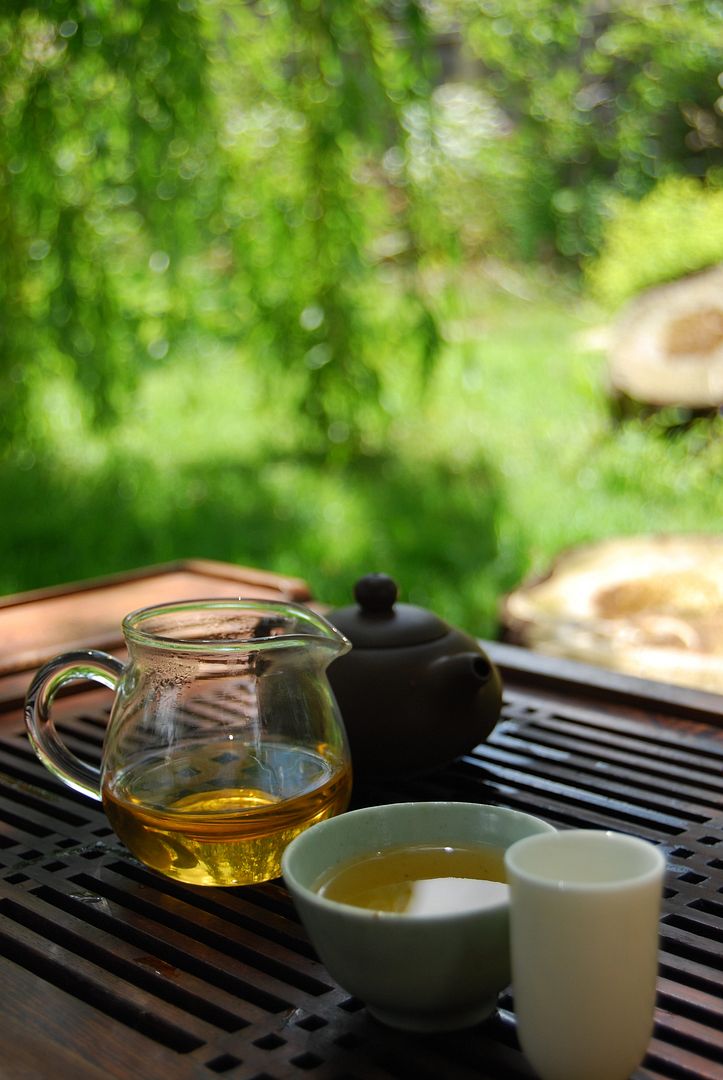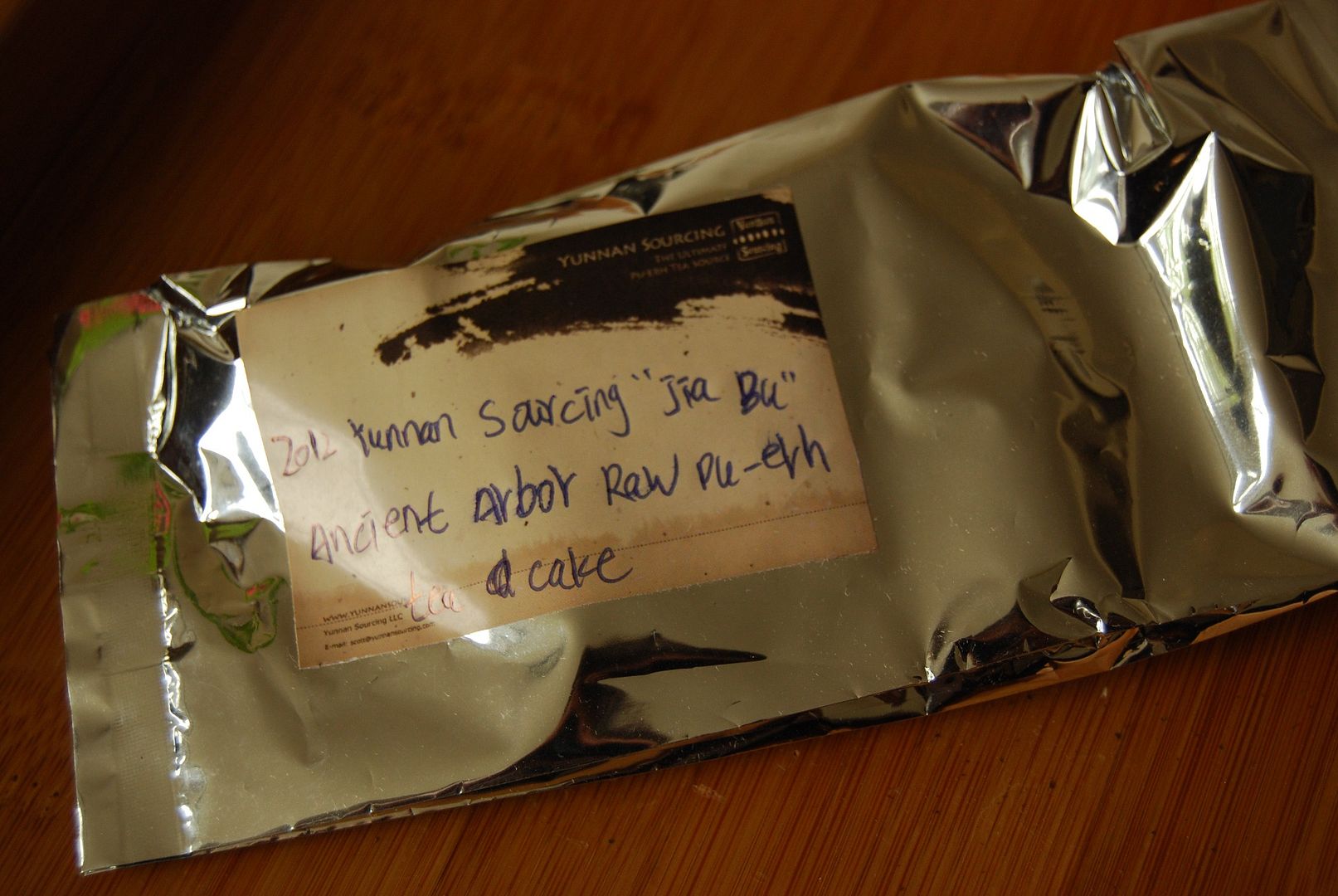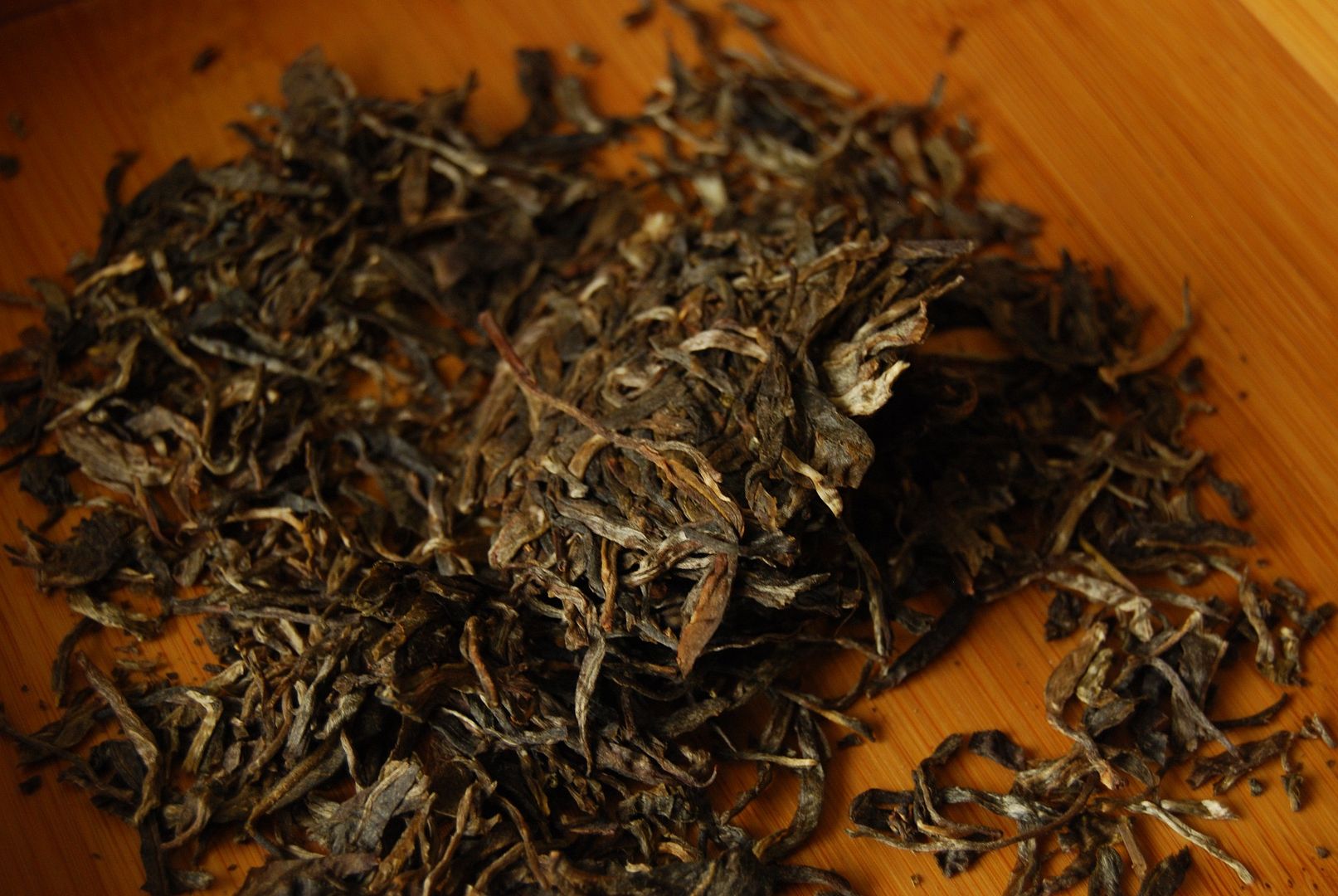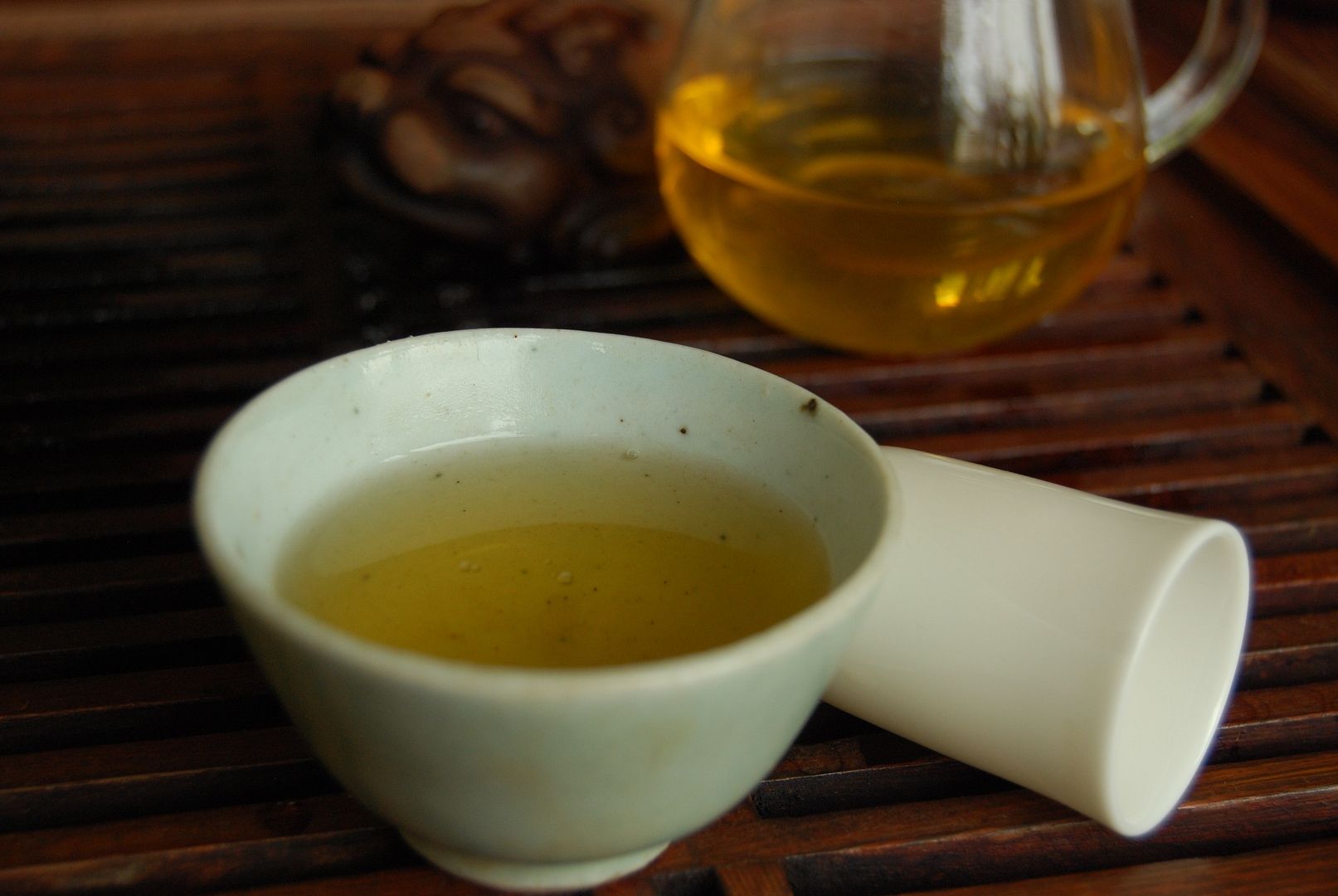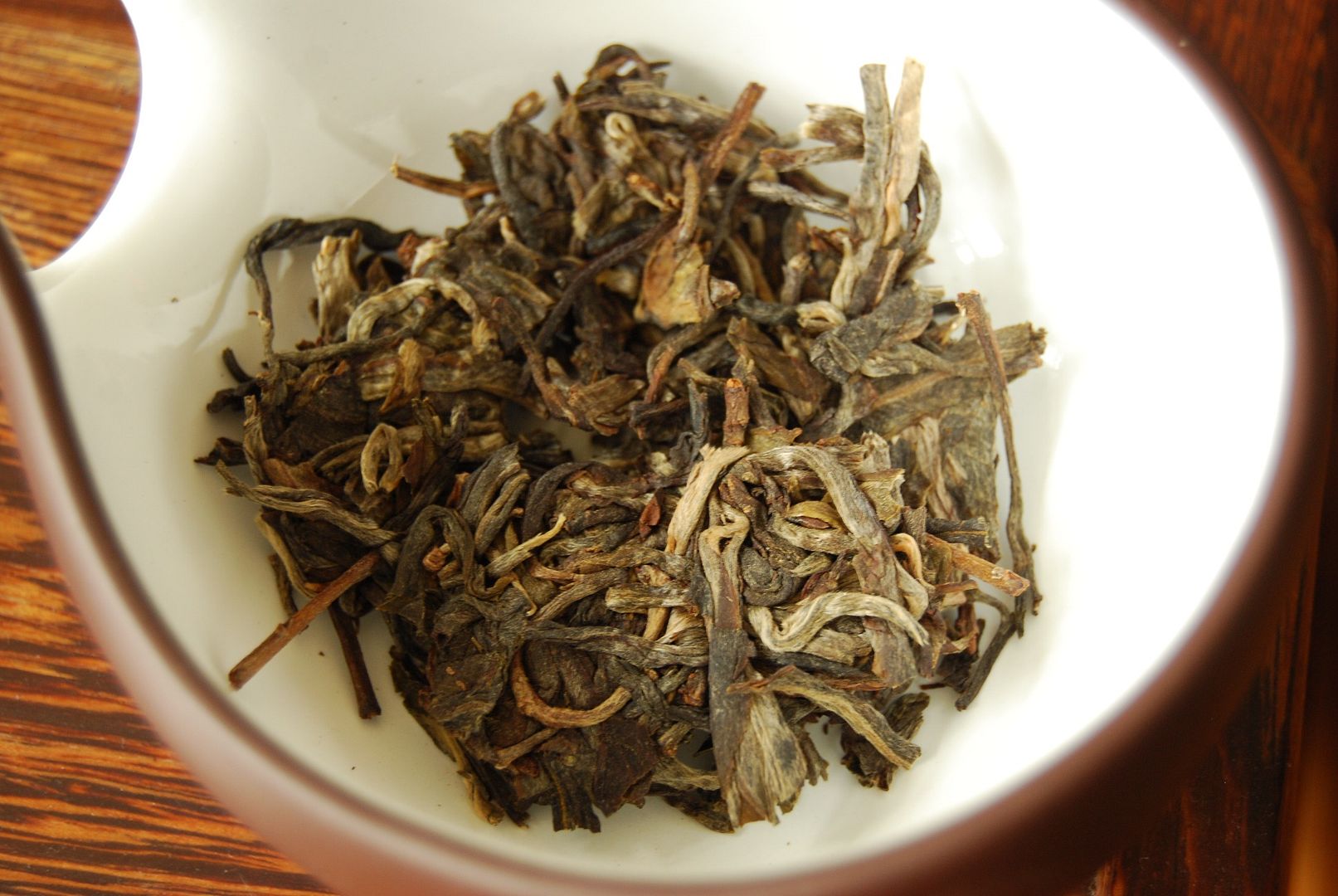I like mighty tea. There is a very good chance that you, Gentle Reader, also enjoy mighty tea. That is, tea with oomph, tea that is going to go the distance, and which will age well (we hope). We seek not just Star Destroyers, but Imperial Class Star Destroyers. There is a big difference between the two.
Ironically, only the Death Star has the potential power to destroy stars. Even then, I remain sceptical: certainly, we have seen documentary evidence that the Death Star can destroy planets, but stars? There is a lot of extra mass in your average star, compared with a mere planetoid. If the Death Star's ability to destroy stars is in question, then how much moreso is that of the "Star Destroyer", Imperial Class or otherwise? We deserve to know.
Scott of Yunnan Sourcing has made some very proper tea over the years, and I think it's only getting better. If you'll forgive the anachronism, I actually tried these 2012 cakes before we piled into the 2013 teas via the tasting event from earlier this year. However, these 2012 cakes reap some serious souls, and I would like to discuss them with you.
First up for a little of the ol' soul reaping comes Sanhezhai [three-together villages]. Like many of the great things in life, we have absolutely no idea which ingredients went into this little number. Scott keeps the blend a closely-guarded secret, as is his every right. However, we know that two of the three villages are in Lincang.
Scott's blends benefit, in my opinion, from his willingness to traipse around outside 'Banna, and forays into Simao and Lincang diqu really help add some depth to his blends. You don't see this a huge amount in the regular headline blends - at least, blenders don't admit to using such leaves. The sweet-granary aspects of some of these regions are (to my tastes) pretty great, and they are proving to age really rather well in my humble collection. So, I am happy merely to know that the mysterious Sanhezhai contains representation from some of these regions.
This tea feels very familiar to me, and yet it has only been produced once before, and that was in the autumn of the previous year (where it comprised leaves from autumn 2010 + spring 2011 + autumn 2011). Imagine my excitement, if you will, at being sent a sample of a springtime version of this rock-solid blend (spring 2011 + spring 2012).
My journal notes that "This is a recovery session, starting at 5 a.m. after Schools Dinner." The latter is the "goodbye" dinner for the graduating year of nine Engineering students in my college, held in the Master's dining room, and which is pretty heavy on the wine (understatement). By sheer chance, the Chancellor of the university (the ex-Governor of Hong Kong) was presiding over another dinner in Hall for the folks who were being awarded honourary degrees at Encaenia the day after. This means that they have a super-flash menu, but which, happily, was then served for our separate Engineering dinner by virtue of the fact that the chef didn't fancy running up two menus. That's a big win, culinarily speaking. We ended up playing table football in the college bar afterwards, in true engineering tradition. I suck at table football.
There really is little better for a "morning after" solution than a strong pu'ercha. I thoroughly recommend it to you next time you're a-hurtin'.
My journal notes that "This is a recovery session, starting at 5 a.m. after Schools Dinner." The latter is the "goodbye" dinner for the graduating year of nine Engineering students in my college, held in the Master's dining room, and which is pretty heavy on the wine (understatement). By sheer chance, the Chancellor of the university (the ex-Governor of Hong Kong) was presiding over another dinner in Hall for the folks who were being awarded honourary degrees at Encaenia the day after. This means that they have a super-flash menu, but which, happily, was then served for our separate Engineering dinner by virtue of the fact that the chef didn't fancy running up two menus. That's a big win, culinarily speaking. We ended up playing table football in the college bar afterwards, in true engineering tradition. I suck at table football.
There really is little better for a "morning after" solution than a strong pu'ercha. I thoroughly recommend it to you next time you're a-hurtin'.
Apart from doing the business with my hangover, this is a mighty fine tea in its own right. It has a soapy, sweet, and satisfyingly thick body - "I find myself loving it", I wrote. There is a note of darkness underneath, some fruitiness, and piles of that Lincang-based sweet-grain flavour. It has great presence in the back of the mouth, where it dwells.
It is absolutely first class, and only swells with passing infusions. "It burns away the heavy dinner of the night before and makes me hungry in the extreme." Good pu'ercha certainly kick-starts the metabolism.
The 2011 version was $24/400g (now currently cruising at $30), while this 2012 version is $31. That price is very nice indeed, for the amount of laser-wielding Imperial Class firepower that this strong, flavoursome, and richly-based tea delivers.
It is absolutely first class, and only swells with passing infusions. "It burns away the heavy dinner of the night before and makes me hungry in the extreme." Good pu'ercha certainly kick-starts the metabolism.
The 2011 version was $24/400g (now currently cruising at $30), while this 2012 version is $31. That price is very nice indeed, for the amount of laser-wielding Imperial Class firepower that this strong, flavoursome, and richly-based tea delivers.
Now, the Mangfeishan cake, on the other hand, is a different kettle of star destroyers.
As part of the recent tasting event, we encountered the 2013 Mangfeishan cake (the "iota" sample), which I found to be a bit watery, and a bit too bitter, without much else going for it. I suspect that I may have misjudged the brewing, because this 2012 version is, by comparison, really rather rocking.
Mangfeishan is in Yongdexian, which is also a Lincang-region spot, and which is priced similarly to the Lincang-heavy Sanhezhai described above. His previous xiaobing from the area was made from slightly aged maocha, and which was cheap and extremely cheerful. This 2012 version is from "100-200 year-old trees", with a one leaf : one bud ratio.
I wrote "Its scent is obviously that of Yongdexian: thick, heavy, fruity, and enduring", which is more than I managed from the 2013 version, which was so strong that I assumed Bulangshan leaves. I found this 2012 version to be full, strong, grassy in the beginning, and always dominated by the Yongde fruitiness that I came to appreciate through the prism of a series of older Yongde cakes from Scott sold some years back. It expands to fill the mouth with its heavy character, and there is a dark base that I can imagine aging fairly well. In the wide and charming world of pu'ercha, this strong, expansive little tea seems almost exotic. Again, a mighty fine tea, with potential for the destruction of stars.
I am entirely unfamiliar with Ailaoshan, apart from the odd cake here or there. This is real Simao diqu tea, bordering on Chuxiong diqu. "Arguably some of the most remote tea gardens in all of Yunnan", writes Scott.
The leaves are fragmented, and that's fine. The rinse has the obvious brown hue (heh) of Simao pu'ercha. It's weird, but I can identify these cakes by the colour of the rinse these days. I'm sure classification accuracy isn't 100%, but it's surprising how many Simao cakes have this unique hue.
The leaves are fragmented, and that's fine. The rinse has the obvious brown hue (heh) of Simao pu'ercha. It's weird, but I can identify these cakes by the colour of the rinse these days. I'm sure classification accuracy isn't 100%, but it's surprising how many Simao cakes have this unique hue.
For the record, this comes from Wangjiazhai [village] of Jingdongxian [county], but we are well away from my comfort zone in terms of geography at this stage. "Way up there" is all I have it filed under, mentally, "sort of near Wuliangshan".
Happily, I completely adore Wuliangshan tea, and, by transitivity, this tea really makes me happy. Granary scents like this remind me of Wuliangshan: long, then deep and caramelised. There is a grassy rukou [initial flavour], and heavy sweetness in the best way of Simao grain. Vibrancy, smoothness - highly enjoyable.
Happily, I completely adore Wuliangshan tea, and, by transitivity, this tea really makes me happy. Granary scents like this remind me of Wuliangshan: long, then deep and caramelised. There is a grassy rukou [initial flavour], and heavy sweetness in the best way of Simao grain. Vibrancy, smoothness - highly enjoyable.
Incidentally, I drank this tea in between practice runs of a presentation that I was due to give as part of a job interview, back in July. Consequently, I was entirely terrified, and this tea worked wonders at bringing me back down to earth. The caffeine didn't hurt, either.
By the fourth infusion, I was detecting a solid lanxiang [orchid aroma] in the classical manner, and which was tangy, sweet, and quite challenging. This cake is ever-so-slightly cheaper, at $25/400g, compared with the Sanhezhai and Mangfeishan cakes, and which therefore strikes me as being something of a bargain.
I promised myself that I would wait until I heard the outcome of the job interview before thinking about buying these cakes. Note to self: I should really get onto Scott's web-site sometime soon. They are Imperial Class indeed.
By the fourth infusion, I was detecting a solid lanxiang [orchid aroma] in the classical manner, and which was tangy, sweet, and quite challenging. This cake is ever-so-slightly cheaper, at $25/400g, compared with the Sanhezhai and Mangfeishan cakes, and which therefore strikes me as being something of a bargain.
I promised myself that I would wait until I heard the outcome of the job interview before thinking about buying these cakes. Note to self: I should really get onto Scott's web-site sometime soon. They are Imperial Class indeed.


